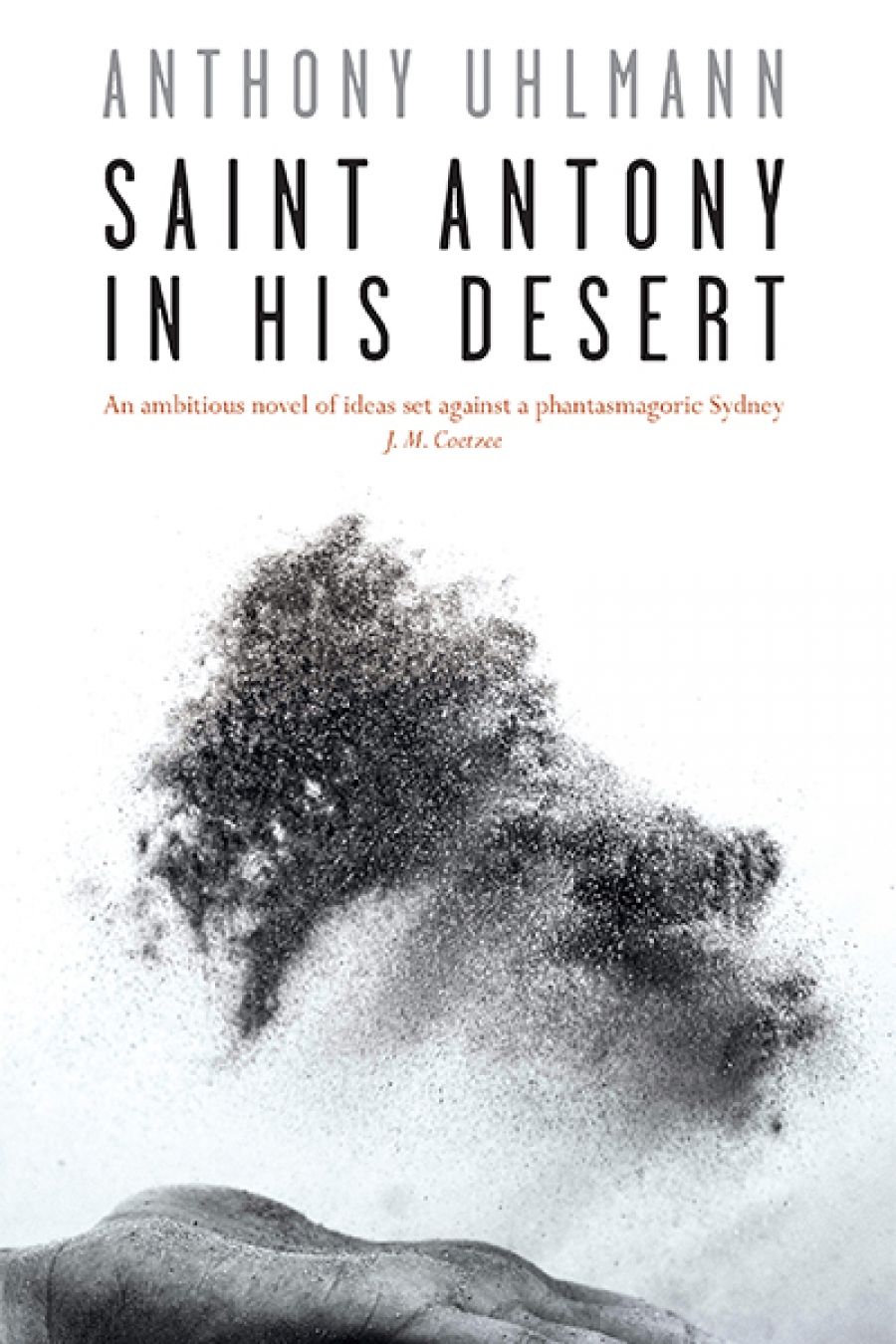
- Free Article: No
- Contents Category: Fiction
- Custom Article Title: Suzie Gibson reviews 'Saint Antony in His Desert' by Anthony Uhlmann
- Review Article: Yes
- Online Only: No
- Custom Highlight Text:
With his maiden voyage into fiction, Anthony Uhlmann, a professor of English at Western Sydney University, has produced an ambitious novel that dramatises the intertwining of time and memory ...
- Book 1 Title: Saint Antony in His Desert
- Book 1 Biblio: UWA Publishing, $26.99 pb, 184 pp, 9781742589787
Interlocking narratives spanning different time periods and settings reveal time as both an objective and instinctual entity. The first narrative concerns a defrocked priest, Antony Elm, who has cast himself into an environmental and psychological wilderness somewhere outside of Alice Springs. Enduring a biblical forty days and forty nights of desert exile, Elm tries to complete a secular manuscript about the Einstein and Bergson Paris meeting, only to be drawn to another story – one that is much closer to his heart. This other narrative chronicles the experiences of two young men, Frederick and Charles, who travel from Canberra to Sydney where they will meet a Triple J radio host who has offered to listen to their demo tape.
In Sydney, Frederick and Charles are challenged and tempted by a dazzling 1980s music scene. Here, the sensitive protagonist Frederick is emotionally tested and transformed. The novel subtly foreshadows this by juxtaposing Elm’s random thoughts against Frederick’s parallel story, ‘There was someone once, or my idea of her’. This ‘someone’ turns out to be ‘Louve’, a charismatic Triple J host whose name evokes ‘love’.
The novel’s meticulous rendering of Frederick and Charles’s urban wanderings is also a movement back in time that retraces historical buildings, stores, and nightclubs that have long since disappeared: The People’s Palace on Pitt Street; Skin Deep on Elizabeth Street; Record Planet inside Centrepoint Shopping Centre. Saint Antony in His Desert conjures an even more deeply hidden world that takes us further back in time:
On the Southern side of the harbour at Circular Quay, where Joseph Conrad once came ashore, are the Maritime Services Board, the ferry terminal and railway station, the Unilever building and the Opera House rising at the tip of Bennelong Point, where the Wangal elder and the first Eora emissary to the British leaders Governor Philip and George III once lived with his second wife, Barangaroo, dead young.
References to the land’s original custodians offers an alternative, mystical perspective on the theme of time – one that disrupts both Bergson’s philosophy and Einstein’s scientific method. The measurement of time as an analogue or digital entity is unsettled by the reminder that it has always been a profoundly ineffable phenomenon that reaches back well before the first white settlers arrived with their clocks and pocket watches.
Intentionally or not, the idea of timelessness is also evocative of Arthur Stace’s ‘Eternity’ tag, which the war veteran emblazoned on pavements and walls across Sydney in the mid-twentieth century. Uhlmann’s educated protagonists ruminate upon questions of eternity, the existence of God, and the possibility of an afterlife. The novel’s framing narrative, concerned with the ex-priest Elm’s crisis of faith, also ponders an infinite temporal realm underpinning our very existence.
There are many big ideas on display in a novel that psychologically and emotionally oscillates between desert and city, past and present, literature and philosophy, 1920s Paris and 1980s Sydney. In many respects, Saint Antony in His Desert is a love letter to Australia’s burgeoning world city where the newly erected Centrepoint Tower casts its shadow across a populace foraging in a landscape that would soon change forever. Apart from its obvious historical and intellectual concerns, at the heart of this novel is a deep sense of loss: ‘“It’s like the first time you fall in love. It’s impossible to feel more intensely than when it first happens, but once it falls apart and you get your heart broken, something’s lost altogether … you can never feel that intensely again. It’s as if you had little hairs, little sensitive hairs that have all been burnt away.”’
Frederick and Charles are too inexperienced to know such grief, but their new acquaintance Kheiron – a hipster would-be rock star – is worldly enough to articulate this kind of bereavement. This rare moment of vulnerability temporarily disrupts the cerebral character of the writing, opening up a secret wound that is perhaps too hastily covered over by the novel’s innumerable literary and philosophical references.
Uhlmann knows his literary history and continental philosophy and is not afraid to show it. In light of this, one might assume that Saint Antony in His Desert is an exercise in literary modernism with its framed narrative and fragmented structure. Yet there is a smothered heat to this work that is reminiscent of Henry James’s notoriously complex but profoundly aesthetic late style.
There is also a sense that Saint Antony in His Desert is not quite fiction – the novel opens and closes with the author’s foreword and afterword. Such framing destabilises the borders between fiction and non-fiction, and is once more evocative of James, whose prefaces serve to encircle his novels. This brilliant book, awash with literary skill and philosophical intelligence, will awaken the curiosity of anyone keen to ponder the meaning of time and how it is inexorably moored to our existence.


Comments powered by CComment